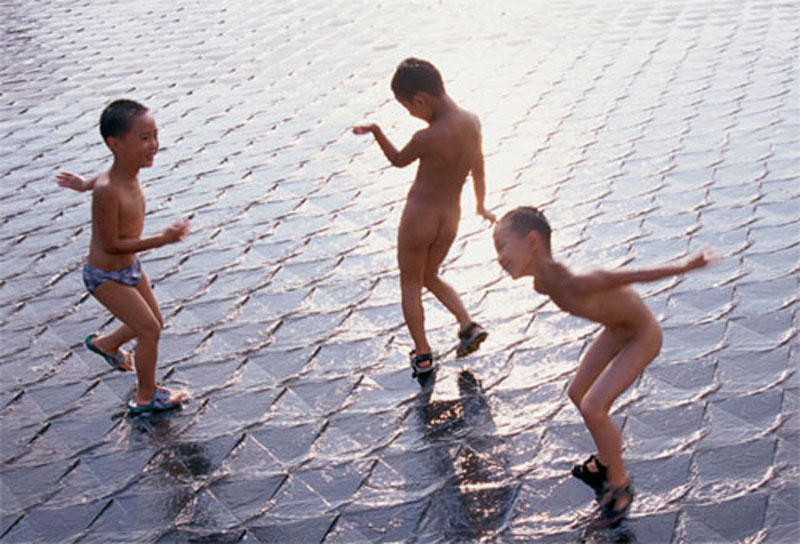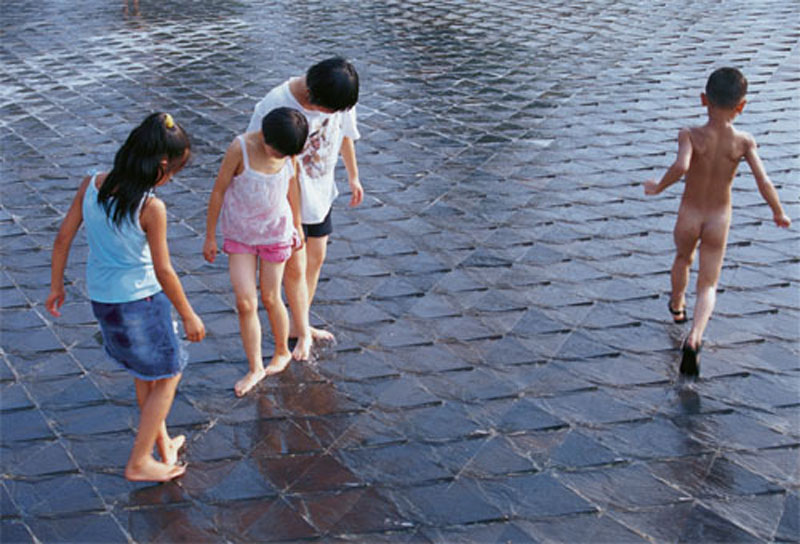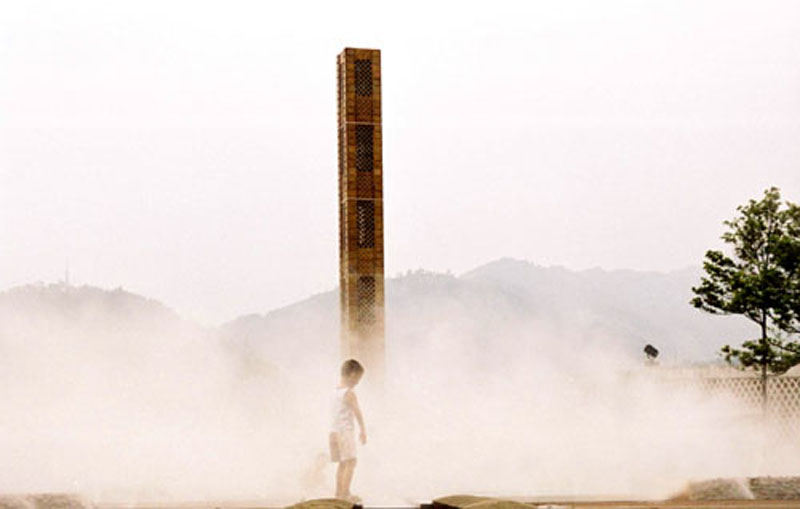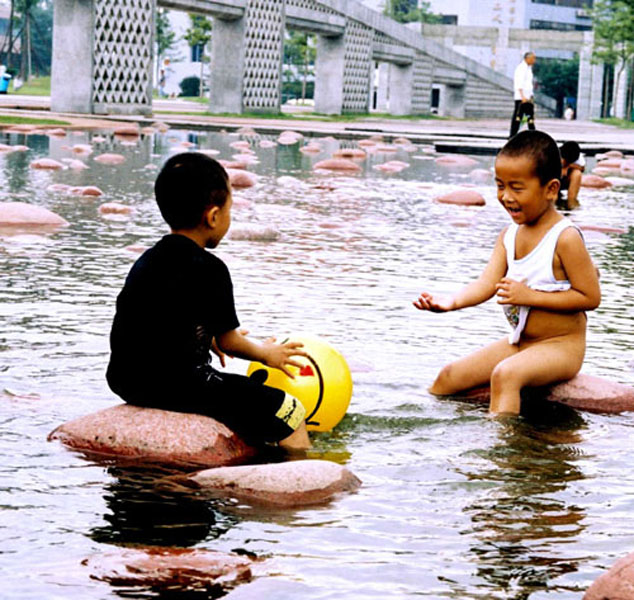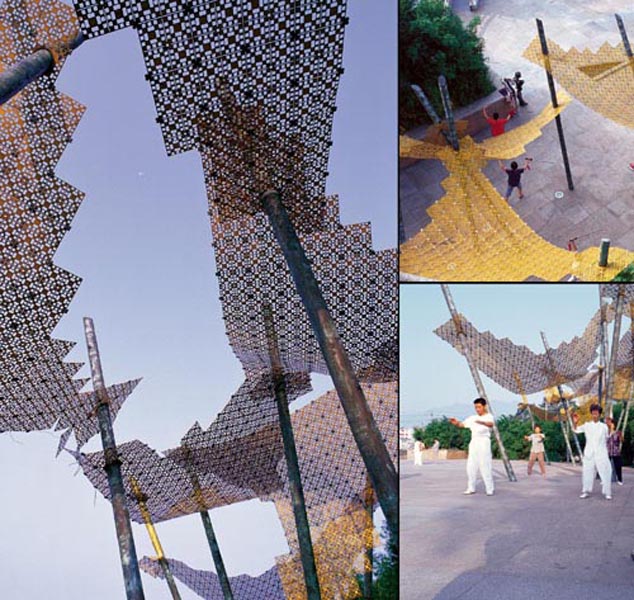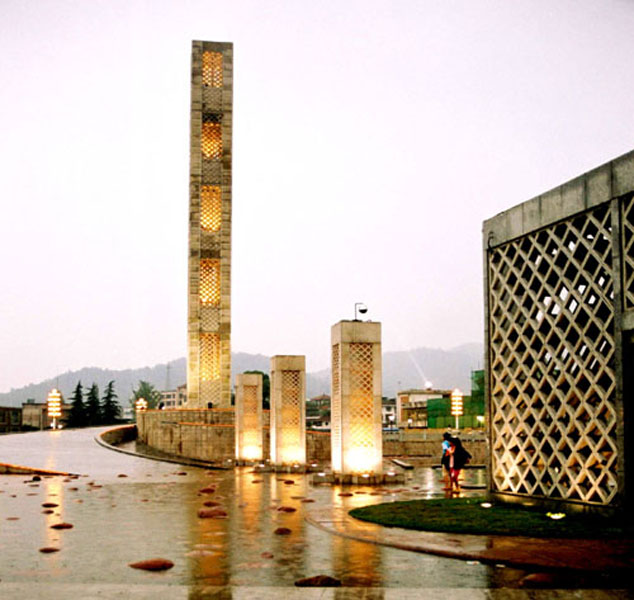Dujiangyan Square
Project Information
- Project Location:
- China Dujiang Yan, Sichuan
- Project Scale:
- 10.7 Hectares
- Design Time:
- June 2000
- Build Time:
- 2002
- Client:
- Dujiang Yan City Government
- Award List:
- 2004 国际青年建筑师推荐奖 Ar+d Recommended (The Architecture Review)
- Related Papers
Project Profile
1. Project Statement
Dujiangyan Square covers 11 hectares and is located in the middle of a dilapidated and featureless old townscape of Dujiangyan City. The city was historically named as the Irrigation County after the famous ancient irrigation works, the Dujianyan Weir. The prosperity of the area has been dependent on this historic infrastructure project. The weir, a world cultural heritage, was built more than two thousand years ago, and is still in use today. In 1999, an international competition of square design was held. Ten entries were selected for the short list and design from Turenscape and GSLA as the final selected design was executed at the end of 2002.
The design strategy was based on careful site analysis and understanding of the local and regional landscape. Listening to the residents’ experiences also helped to understand daily life and create social context and sensitivity to the design approach. This approach helped the designers understand the spirit of the place.
2. Objective and Challenge
(1) Transportation: A main street across the existing site divides the square into south and north areas. To resolve this incongruous physical barrier, the designers created an underpass with sunken water squares at each end as a form of spatial linkage.
(2) Water accessibility: The slope of the three irrigation canals are steep with rapid water flows and are could not be modified due to water management regulation. The design made use of the elevation difference to divert water from the upper reach of the canals and create a creek in the square, allowing the water to become accessible and touchable.
(3) Fragmentation and identity: The square was fragmented by rapid canals. A formal and symbolic language was developed using the bamboo basket as a reference. As a paving pattern, this bamboo basket in the horizontal plane acts as the unifying element. As the main field of pavement, it gives a form of identity and creates uniformity to this public space. The overall layout of the square resembles an unfolding bamboo basket that radiates from a focal point. A sculpture stands at the focal point. The lighting columns, the carved stone walls, and fences also use the bamboo basket as a design reference.
3. Design Strategy
In addition to formulating strategies that make the square functional, aesthetic issues and symbolism are utilized in the overall design approach. The designers took their design cues and inspirations from careful research, such as the folklore of the irrigation works-Dujiangyan Weir, The regional landscape, and the lifestyle of the people.
4. Conclusion
This new public space is intended to provide a narrative landscape that represents local tradition, the spirit of the place, local heritage, and the city’s lifestyle.
